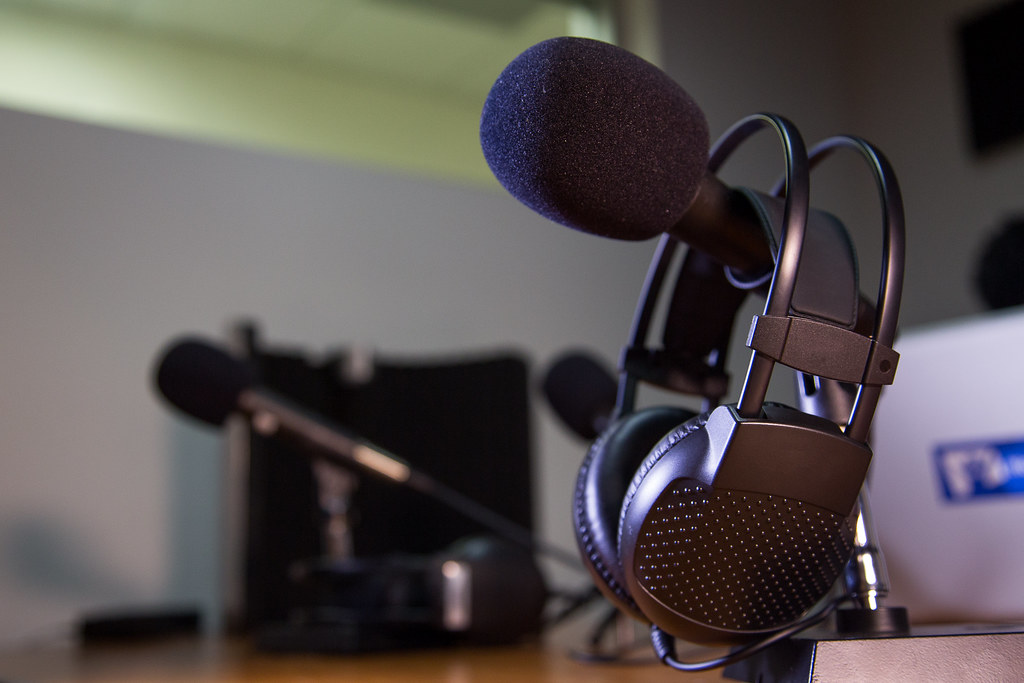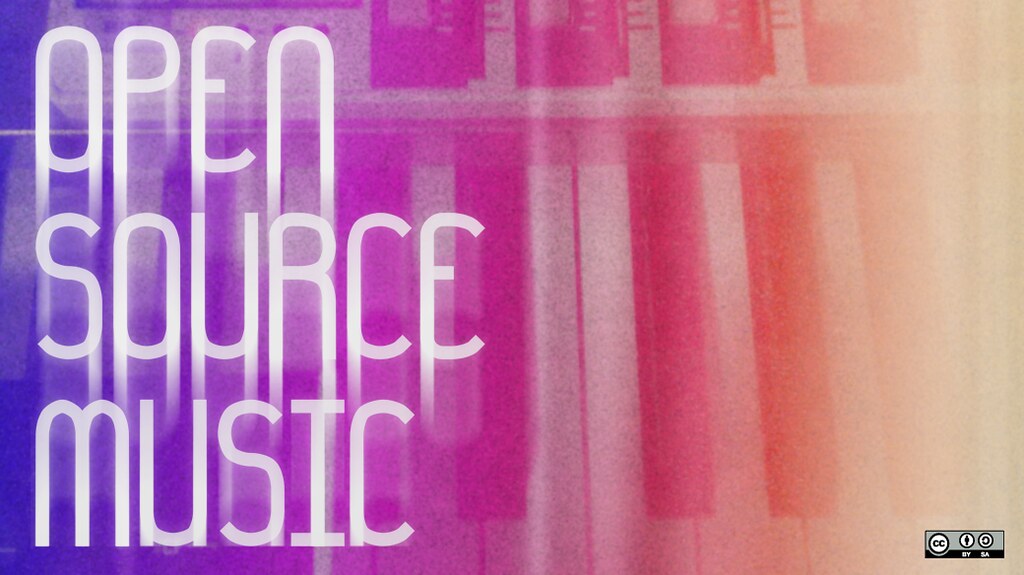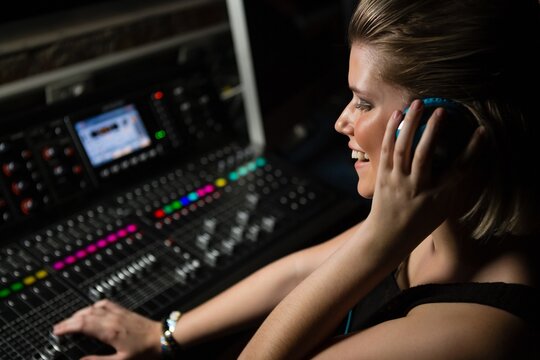Music production basics are the foundation of creating music that sounds professional and polished. Whether you’re a beginner or an experienced musician, understanding the basics of music production is essential to producing high-quality tracks. In this beginner’s guide, we’ll cover everything you need to know about music production basics, including the different types of music production software, getting started with a digital audio workstation (DAW), MIDI sequencing, audio recording and editing, mixing and mastering, choosing the right software, and common music production techniques and tips. By the end of this guide, you’ll have a solid understanding of the fundamentals of music production and be ready to start creating your own music.
Table of Contents

Music Production Software: An Overview
Music production software is a powerful tool that enables musicians, producers, and engineers to create, record, edit, and mix music. It is a type of software that is designed to help users produce high-quality music with ease. There are several types of music production software available, including digital audio workstations (DAWs), plugins, and virtual instruments.
Digital Audio Workstations (DAWs)
A digital audio workstation, or DAW, is a software application that is used to record, edit, and mix audio. It is the most popular type of music production software and is used by professionals and beginners alike. DAWs come with a wide range of features and tools, including MIDI sequencing, audio recording and editing, mixing and mastering, and more. Some popular DAWs include Ableton Live, Logic Pro X, and FL Studio.
Plugins
Plugins are software programs that can be used within a DAW to add additional functionality. They are designed to enhance the capabilities of a DAW and provide users with more options for creating and editing music. There are many different types of plugins available, including virtual instruments, effects, and processors. Plugins can be used to add new sounds to your music, enhance existing sounds, or add special effects. Some popular plugins include Native Instruments Massive, Waves SSL E-Channel, and FabFilter Pro-Q 3.
Virtual Instruments
Virtual instruments are software programs that are used to create sounds that can be played using a MIDI controller. They are designed to replicate the sounds of real instruments and provide users with a wide range of options for creating music. There are many different types of virtual instruments available, including synthesizers, samplers, and drum machines. Virtual instruments can be used to create a wide range of sounds, from realistic acoustic instruments to futuristic electronic sounds. Some popular virtual instruments include Native Instruments Kontakt, Spectrasonics Omnisphere, and Arturia V Collection.
Music production software is an essential tool for anyone who wants to create high-quality music. Whether you are a beginner or a professional, there is a music production software that can help you achieve your goals. In the next section, we will discuss how to get started with a DAW.

Getting Started with Digital Audio Workstations (DAWs)
If you’re new to music production, getting started with a DAW can be overwhelming. However, with a little bit of practice and patience, you can quickly learn the basics and start creating your own music.
What is a DAW?
A digital audio workstation (DAW) is a type of music production software that is used to record, edit, and mix audio. DAWs are the most popular type of music production software and are used by musicians, producers, and engineers around the world.
Features and Tools
Most DAWs come with a wide range of features and tools, including:
- MIDI sequencing: This feature allows you to create and edit MIDI data, which can be used to control virtual instruments and other software.
- Audio recording and editing: This feature allows you to record and edit audio using your computer’s microphone or an external audio interface.
- Mixing and mastering: This feature allows you to mix and master your tracks, adjusting levels, adding effects, and preparing your tracks for distribution.
Some popular DAWs include:
- Ableton Live: A popular DAW used by electronic music producers and live performers.
- Logic Pro X: A popular DAW used by Mac users for recording, editing, and mixing music.
- FL Studio: A popular DAW used by hip-hop and electronic music producers.
Tips and Tricks
If you’re new to music production, here are some tips and tricks to help you get started with a DAW:
- Choose the right software: There are many different DAWs available, so it’s important to choose one that fits your needs and budget. Consider the features you need, the type of music you want to create, and the compatibility with your computer.
- Invest in good equipment: While you don’t need to spend a lot of money on equipment, investing in a good MIDI controller, audio interface, microphone, and headphones can make a big difference in the quality of your recordings.
- Practice, practice, practice: Like any skill, music production takes practice. Don’t be afraid to experiment and try new things. Watch tutorials, read articles, and listen to music to get inspiration and learn new techniques.

MIDI Sequencing Basics
MIDI sequencing is a powerful tool that allows you to create complex musical arrangements quickly and easily. It is the process of creating music using a MIDI controller and a DAW. MIDI stands for Musical Instrument Digital Interface and is a protocol that allows electronic musical instruments, computers, and other devices to communicate with each other.
What is MIDI Sequencing?
MIDI sequencing is a process that involves recording and editing MIDI data in a DAW. MIDI data consists of a series of messages that represent musical notes, dynamics, and other performance parameters. MIDI sequencing allows you to create and manipulate these messages to create complex musical arrangements.
MIDI Controllers
MIDI controllers come in many different forms, including keyboards, drum pads, and wind controllers. When choosing a MIDI controller, it’s important to consider your specific needs and the type of music you want to create. Some controllers are designed for specific genres of music, while others are more versatile.
Choosing the Right MIDI Controller
When choosing a MIDI controller, consider the following factors:
- The type of music you want to create
- Your budget
- The number of keys or pads you need
- The quality of the keys or pads
- The number and type of knobs, faders, and other controls
- The size and portability of the controller
Creating a Basic MIDI Sequence
To create a basic MIDI sequence in your DAW, follow these steps:
- Open your DAW and create a new MIDI track.
- Choose a virtual instrument and load it onto the track.
- Connect your MIDI controller to your computer and select it as the input device.
- Record your MIDI sequence using your MIDI controller.
- Edit your MIDI sequence using your DAW’s editing tools.
By following these steps, you can create a basic MIDI sequence that can be used as the foundation for a more complex musical arrangement.

Audio Recording and Editing Basics
Audio recording and editing is a crucial part of music production that involves capturing and manipulating sound using a microphone and a DAW. It is the process of recording, editing, and enhancing audio to create a polished and professional sound.
Basics of Audio Recording and Editing
To get started with audio recording and editing, you’ll need a microphone, a DAW, and a quiet recording environment. It is essential to choose the right microphone for the job, as different microphones are suited for different recording situations. Once you have your equipment set up, you can start recording and editing audio using your DAW’s recording and editing tools.
When recording, it is important to ensure that your recording environment is quiet and free from background noise. You can use soundproofing materials to reduce external noise and create a more controlled recording environment. Additionally, you can use pop filters to reduce plosives and sibilance in your recordings.
When editing, you can use a range of tools to manipulate your audio. These tools include EQ, compression, and reverb. EQ can be used to adjust the frequency balance of your recordings, while compression can be used to control the dynamic range of your recordings. Reverb can be used to create a sense of space and depth in your recordings.
Tips and Tricks
Here are some tips and tricks to help you get started with audio recording and editing:
- Choose the right microphone: Different microphones are suited for different recording situations. Choose the right microphone for the job to ensure the best possible sound quality.
- Set up your recording environment: Make sure your recording environment is quiet and free from background noise. Use soundproofing materials and pop filters to reduce external noise and improve the quality of your recordings.
- Use EQ and compression: EQ and compression are essential tools for enhancing the sound of your recordings. Use EQ to adjust the frequency balance of your recordings and compression to control the dynamic range of your recordings.
- Experiment with effects: Don’t be afraid to experiment with different effects to create unique sounds and textures. Reverb, delay, and distortion are just a few examples of effects that can be used to create interesting and creative sounds.

Mixing and Mastering Basics
Mixing and mastering are the final stages of the music production process. Mixing is the process of combining multiple tracks into a single stereo track, while mastering is the process of preparing the final mix for distribution. In this section, we will discuss the different tools and techniques used in mixing and mastering, as well as some tips and tricks to help you achieve a balanced mix and prepare your tracks for distribution.
Mixing and Mastering Tools and Techniques
There are many different tools and techniques used in mixing and mastering, including:
- *EQ*: Equalization is used to adjust the balance of frequencies in your mix. Use EQ to cut or boost certain frequencies to achieve a balanced mix.
- *Compression*: Compression is used to control the dynamic range of your mix. Use compression to even out the levels of your tracks and add punch to your mix.
- *Reverb*: Reverb is used to create a sense of space in your mix. Use reverb to add depth and dimension to your tracks.
- *Limiting*: Limiting is used to prevent clipping and ensure that your tracks are at a consistent volume level. Use limiting to increase the overall loudness of your mix without causing distortion.
These tools and techniques can be used to create a balanced mix and prepare your tracks for distribution.
Tips and Tricks
Here are some tips and tricks to help you with mixing and mastering:
- *Use reference tracks*: Use reference tracks to compare your mix to professionally produced tracks. This will help you identify areas that need improvement and ensure that your mix is competitive in the market.
- *Take breaks*: Mixing and mastering can be tiring, so take breaks to rest your ears and avoid ear fatigue. This will help you make better decisions and avoid making mistakes in your mix.
- *Prepare your tracks for distribution*: Make sure your tracks are properly mixed and mastered before distributing them. This includes ensuring that your tracks are at a consistent volume level, free of distortion, and ready for different playback systems.
Choosing the Right Music Production Software
Choosing the right music production software can be a daunting task, especially with the plethora of options available in the market. However, it’s important to consider your budget, your level of experience, and your specific needs before making a decision. Here are some recommendations for the best music production software for different levels of users:
For Beginners
If you’re just starting out in music production, you may want to consider software that is easy to use and budget-friendly. Here are some options:
- GarageBand (Mac): This software comes pre-installed on all Mac computers and is a great option for beginners. It has a user-friendly interface and offers a range of features, including virtual instruments, MIDI sequencing, and audio recording and editing.
- FL Studio (Windows): FL Studio is a popular choice for beginners on Windows. It has a simple interface and offers a range of features, including virtual instruments, MIDI sequencing, and audio recording and editing.
For Intermediate Users
If you have some experience in music production and are looking for more advanced features, here are some options:
- Ableton Live: Ableton Live is a popular choice for electronic music producers. It offers a range of features, including MIDI sequencing, audio recording and editing, and live performance capabilities.
- Logic Pro X (Mac): Logic Pro X is a powerful software for Mac users. It offers a range of features, including virtual instruments, MIDI sequencing, and audio recording and editing.
For Advanced Users
If you’re an experienced music producer and are looking for professional-grade software, here are some options:
- Pro Tools: Pro Tools is a popular choice for professional music producers and audio engineers. It offers a range of features, including advanced audio editing and mixing capabilities.
- Cubase (Windows): Cubase is a powerful software for Windows users. It offers a range of features, including virtual instruments, MIDI sequencing, and audio recording and editing.
No matter which software you choose, it’s important to take the time to learn the ins and outs of the software and to experiment with different features and techniques. This will help you to get the most out of your music production software and to create high-quality music.

Common Music Production Techniques and Tips
As you continue to develop your music production skills, there are some common techniques and tips that can help you create high-quality music. Here are a few to keep in mind:
Use Automation to Create Dynamic Changes
Automation is a powerful tool that can be used to create dynamic changes in your music. By automating parameters such as volume, panning, and effects, you can add interest and movement to your tracks. For example, you could use automation to gradually increase the volume of a synth lead as the chorus progresses, or to add a filter sweep to a drum fill.
Layer Sounds to Create Complex Textures and Harmonies
Layering sounds is a technique that involves combining multiple sounds to create a more complex texture or harmony. This can be done with instruments, vocals, or even sound effects. By layering sounds, you can create a richer, more interesting sound that captures the listener’s attention. For example, you could layer a piano with a pad to create a lush, atmospheric sound, or layer multiple vocal tracks to create a choir-like effect.
Create a Sense of Space with Reverb and Other Effects
Creating a sense of space in your mix is an important part of music production. By using effects such as reverb, delay, and chorus, you can create a sense of depth and dimensionality in your tracks. For example, you could use reverb to create the illusion of a large, spacious room, or use delay to create a sense of distance between instruments. Experimenting with different effects and settings can help you find the perfect balance for your mix.
Conclusion
In summary, mastering the basics of music production is crucial to producing high-quality music. Regardless of your level of experience, there are numerous tools and techniques available to help you create the music you desire. By following the tips and tricks outlined in this article, you can quickly learn the fundamentals of music production and start creating your own music.
Remember, practice makes perfect. Don’t be afraid to experiment with different techniques and tools to find what works best for you. Keep learning and honing your skills to take your music production to the next level.
If you found this article helpful, be sure to check out our other content on music production software, digital audio workstations, MIDI controllers, audio interfaces, mixing and mastering, virtual instruments, audio effects, sampling, beat making, and recording techniques. With our comprehensive guides and tutorials, you’ll be well on your way to becoming a music production expert.
As an experienced music producer and home recording enthusiast for over a decade, I have a deep understanding of the challenges faced by musicians when it comes to finding the best budget PC for music production. Throughout my career, I have worked with various software and hardware setups, experimenting with different PC configurations to optimize my workflow and achieve professional-quality results. My extensive knowledge in this field has been further enhanced by my academic background in computer science, where I conducted research on the impact of processor speed on audio rendering and the benefits of SSD storage in reducing latency during music production. Additionally, I have closely followed industry trends and consulted with experts in the field to ensure that the recommendations provided in this guide are based on the latest advancements and reliable data. By combining my practical experience, academic insights, and research-backed information, I aim to provide musicians and aspiring producers with a comprehensive guide that will empower them to make informed decisions and elevate their music production endeavors.


